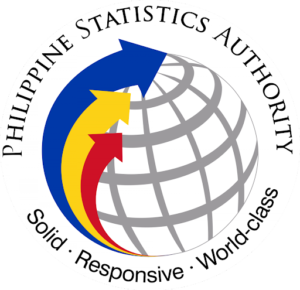The country’s headline inflation rate eased in August due to lower prices for food and non-alcoholic beverages and transportation costs during the month, the Philippine Statistics Authority (PSA) said on Thursday, September 5.
Data from the PSA showed that the country’s consumer price index (CPI) eased by 3.3 percent in August from the previous year, lower than the 4.4 percent rate in July and 5.3 percent in August 2023.
The latest inflation data brings the average inflation rate to 3.6 percent in the first eight months of the year.
The inflation rate in August was within the central bank’s anticipated range of 3.2 percent to 4.0 percent and is lower than what economists expected in a City Post poll of economists at 3.6 percent.
The core inflation rate, which excludes volatile food and energy prices, stood at 2.6 percent in August, slower than the 2.9 percent rate in the previous month and 6.1 percent recorded in August 2023.
In a press briefing, PSA Chief and National Statistician Dennis Mapa attributed the drop in inflation rate in August to the slower increase in prices of food and non-alcoholic beverages at 3.9 percent from 6.4 percent in July.
The country’s chief statistician pointed out that the food inflation eased to 4.2 percent from 6.7 percent due to the decline in rice inflation which went down to 14.7 percent from 20.9 percent in July.
Asked about the effects of Typhoon Carina on inflation, Mapa acknowledged minor price hikes in some products, particularly eggs.
“We saw some price increases, such as for dairy and eggs in particular,” Mapa said.
“This is largely due to the effects of Typhoon Carina, but overall, the impact on inflation has been limited,” Mapa added.
Mapa also mentioned that vegetable prices, which are typically affected by typhoons, saw a decrease, contributing to the overall decline in food inflation.
On the other hand, Mapa said transport inflation slowed down by 0.2 percent to 3.4 percent in August from 3.6 percent in July, after the decline in fuel and shipping prices.
But the housing, water, electricity, gas, and other fuels sector saw a 3.8 percent inflation rate, contributing 24.5 percent to the overall figure. Notably, the price of liquefied petroleum gas (LPG) spiked by 17.0 percent, while electricity rates also rose by 3.2 percent.
The third-largest contributor was the restaurant and accommodation services sector, which recorded a 4.6 percent inflation rate, with restaurants and cafes posting a 4.7 percent rise in prices.
Rice inflation
Rice inflation, although still high at 14.7 percent in August, showed improvement from July’s 20.9 percent.
“We expect rice inflation to further decline to single-digit levels in the coming months, driven by the base effect and recent policy measures,” Mapa said, citing tariff reductions as a key factor.
Mapa said the price of regular-milled rice averaged P50.66 per kilo in August, slightly lower than July’s P50.90 and P43.29 in August 2023.
Prices for the well-milled rice reached an average of P55.56 per kilo in August, slightly lower in July at P55.85 per kilo. In August 2023, it was P47.65 per kilo.
For the special mill, the average price per kilo in August was at P64.08, a slight decrease from July’s P64.42 per kilo. In August last year, it was P56.24.
“Though the decline in rice prices has been slow, we are optimistic about a more substantial drop between September and October,” Mapa added.
“We have expectations that it will ease to single digit. Of course, we have been saying that during the past conferences that it will increase in July and will ease by August,” Mapa added.
Regional inflation
Inflation eased in the National Capital Region (NCR), reaching 2.3 percent in August, down from 3.7 percent in July.
Areas outside NCR likewise experienced a decline in inflation month on month to 3.6 percent in August from 4.6 percent in July.
The highest inflation in these areas was recorded in the Davao Region at 4.9 percent, while the lowest was in the Ilocos Region at 1.8 percent.
For the bottom 30 percent of income households, inflation also fell to 4.7 percent in August from 5.8 percent in July.
Food and non-alcoholic beverages accounted for 83.9 percent of this slowdown, with rice inflation remaining the largest contributor.
In a statement, National Economic and Development Authority Secretary Arsenio Balisacan said the sustained easing of inflation will support growth in household consumption, which elevated prices have long suppressed.
“Low-income households will benefit from the decline in food inflation, as food constitutes more than half (51.4 percent) of the consumption of the bottom 30 percent of households,” Balisacan said.
“Moreover, as businesses have identified persistent inflationary pressure as a significant concern, the recent stability and moderation in inflation will encourage investments, especially as borrowing costs are declining. Most importantly, the appetite for business expansion will improve as consumer spending increases,” Balisacan added. (TCSP)




